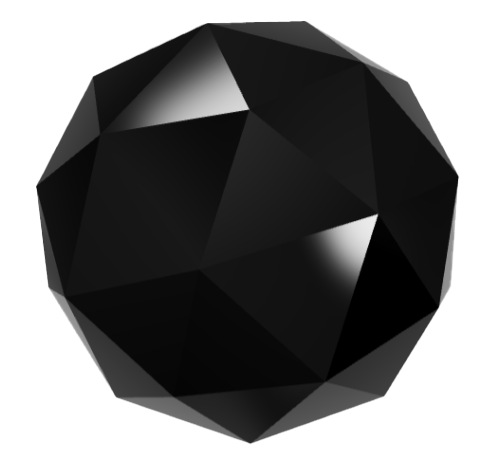The Power of Algorithms: How Generative 3D NFTs Are Redefining Artistic Expression
In recent years, the fusion of technology and creativity has given birth to a new form of artistic expression: generative 3D NFTs (Non-Fungible Tokens). These digital assets leverage complex algorithms to create unique pieces of art that challenge traditional notions of authorship, originality, and value in the art world. As we delve deeper into this emerging realm, we’ll explore the mechanics behind generative art, the role of algorithms, and how these innovations are reshaping the landscape of artistic expression.
The Emergence of Generative Art
Generative art is a concept that dates back to the 1960s but has gained significant traction in the digital age. It refers to art that is created using autonomous systems, often involving algorithms that dictate the artistic process. Artists are no longer confined to traditional mediums; they can now harness the power of code to create dynamic, evolving works of art.
With the advent of blockchain technology and NFTs, generative art has found a new platform to thrive. NFTs allow artists to tokenize their digital creations, establishing provenance and ownership in a way that was previously impossible. This intersection of technology and creativity has opened up exciting possibilities for artists and collectors alike.
The Role of Algorithms in Artistic Expression
At the heart of generative 3D NFTs lies the algorithm. These mathematical constructs serve as the foundation for the artistic process, generating visual elements based on predetermined parameters set by the artist. This can range from simple shapes and colors to intricate patterns and animations. The result is a piece of art that is not only unique but also inherently tied to the algorithm that created it.
Algorithms can be programmed to introduce randomness, ensuring that each iteration of a generative artwork is different from the last. This unpredictability is one of the defining features of generative art, allowing for infinite variations and complexities. As a result, collectors are drawn to the idea that their NFT is one-of-a-kind, even if it shares similarities with other pieces created using the same code.
Creating Generative 3D NFTs
The process of creating generative 3D NFTs typically begins with an artist writing code that defines the rules of the artwork. This code can dictate everything from the color palette to the shapes and movements of the 3D elements. Artists often use programming languages such as Processing, p5.js, or Three.js to bring their visions to life.
Once the code is written, the artist can run it to generate a series of unique outputs. Each output can then be minted as an NFT, allowing it to be sold or traded on various platforms. This democratization of the art creation process means that artists can reach a global audience without the need for traditional galleries or auction houses.
The Appeal of Generative 3D NFTs
Generative 3D NFTs have captivated collectors for several reasons. One of the primary attractions is the concept of ownership of a unique digital artifact. In a world where digital content can be easily copied and shared, owning an NFT provides a sense of exclusivity. Collectors can take pride in owning a piece of art that is verifiably unique and has a direct connection to the artist.
Moreover, the interplay between technology and art resonates with a tech-savvy generation that appreciates innovation. The creativity involved in coding and the technical prowess required to produce generative art are seen as valuable skills in today’s digital economy. As a result, collectors often view generative NFTs as investments in both art and technology.
Key Players in the Generative NFT Space
The generative NFT space is home to several notable artists and platforms that have made significant contributions to the movement. One of the most recognized names is Beeple, whose digital artwork sold for a staggering $69 million at a Christie’s auction. Although Beeple’s work is not solely generative, he has incorporated generative elements into his pieces, showcasing the potential of the medium.
Another influential figure is Art Blocks, a platform dedicated to generative art. Art Blocks allows artists to create and mint their generative artworks as NFTs, enabling collectors to purchase unique pieces directly from the creators. The platform has gained popularity for its curated collections, which feature works from emerging and established artists alike.
The Future of Generative 3D NFTs
As we look ahead, the future of generative 3D NFTs appears bright. The integration of artificial intelligence (AI) into the artistic process is set to further expand the boundaries of creativity. Artists are experimenting with AI algorithms to create works that can learn and evolve over time, leading to even more dynamic and interactive pieces.
Additionally, as the technology behind blockchain continues to mature, we can expect to see enhancements in the way NFTs are created, sold, and traded. Greater accessibility will enable a more diverse range of artists to enter the space, enriching the generative art landscape with varied perspectives and styles.
The Challenges Ahead
Despite the excitement surrounding generative 3D NFTs, there are challenges that must be addressed. One of the most pressing issues is the environmental impact of blockchain technology. The energy consumption associated with minting and trading NFTs has raised concerns about the sustainability of the medium.
Moreover, as the market for NFTs continues to grow, questions surrounding copyright and intellectual property rights have emerged. Artists must navigate the complexities of ownership, especially when their algorithms can produce outputs that resemble existing works. Establishing clear guidelines will be essential to ensure fair practices in the NFT space.
Conclusion: A New Frontier in Art
Generative 3D NFTs represent a revolutionary shift in artistic expression, merging creativity with cutting-edge technology. By harnessing the power of algorithms, artists are redefining what it means to create and own art in the digital age. As this movement continues to evolve, it will undoubtedly shape the future of art, challenging our perceptions of originality, value, and the role of the artist.
The journey of generative 3D NFTs is just beginning, and as we navigate this new frontier, one thing is clear: the power of algorithms will continue to inspire and transform the world of artistic expression.
FAQs
What are generative 3D NFTs?
Generative 3D NFTs are digital assets that utilize algorithms to create unique pieces of art. These artworks are minted as non-fungible tokens on a blockchain, providing proof of ownership and authenticity.
How do algorithms contribute to generative art?
Algorithms serve as the foundation for generative art, dictating the rules and parameters that define the artistic process. They enable the creation of dynamic and unique pieces by introducing elements of randomness and complexity.
What programming languages are used to create generative art?
Common programming languages for creating generative art include Processing, p5.js, and Three.js. These languages allow artists to write code that generates visual elements based on specific algorithms.
Why are generative 3D NFTs appealing to collectors?
Collectors are drawn to generative 3D NFTs due to their uniqueness, the connection to the artist, and the intersection of art and technology. Ownership of an NFT provides a sense of exclusivity in a digital world where content can be easily replicated.
What challenges do generative 3D NFTs face?
Challenges include environmental concerns related to blockchain technology, as well as issues surrounding copyright and intellectual property rights. Establishing clear guidelines will be crucial for the future of the NFT space.

